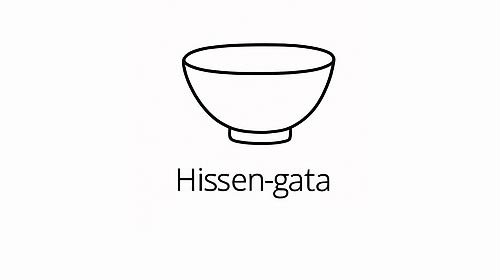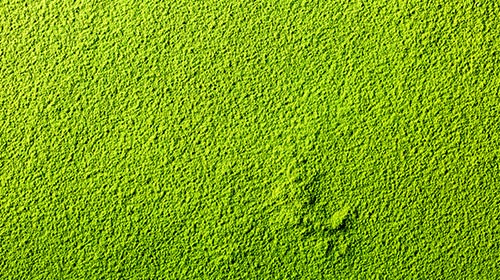The Hissen-gata chawan is a tribute to movement. "Hissen" (筆線) literally means "brushstroke"—and that's exactly what this bowl looks like: formed from a single fluid, rhythmic stroke.
It symbolizes the connection between tea ceremony and calligraphy , two arts that are often considered sisters in Japanese thinking: both require concentration, gesture, emptiness and presence.
Shape & Characteristics
Hissen-gata has an asymmetrically curved silhouette , often with a dynamic curve, as if drawn by a brush. Its contours are soft but not arbitrary: they follow an inner rhythm, a direction.
Typical are:
-
a slightly inclined wall that rises more strongly on one side
-
an irregular edge , as if it had been created by lifting a brush
-
a slightly sloping floor line that suggests movement, even when stationary
This bowl is not static – it appears alive, as if captured in a moment of transition.
Historical background
Hissen-gata developed in the late Edo period , presumably under the influence of tea masters who were also calligraphers. In those circles, the act of beating tea was compared to typing a kanji : both required inner balance, breath control, and devotion to the moment.
Such bowls were not intended for formal schools , but for expressive tea masters who understood the tea path as an art form.
Materials & Glaze
The Hissen-gata is often manufactured in workshops that show an affinity for freedom of form:
-
Karatsu ware with iron-spotted glaze
-
Raku-Yaki with a matte, often broken surface
-
More modern interpretations in Bizen or Hagi with natural firing marks
The glaze is usually partially flowing , revealing structure and movement, following the gesture of the form. The kōdai (foot) is often irregular or offset.
Function & Meaning
The Hissen-gata is suitable for both usucha and koicha, depending on the depth of the wall. However, its expression makes it ideal for:
-
Informal tea ceremonies with artistic aspirations
-
Encounters with calligraphers, artists or philosophers
-
Tea in the context of exhibitions or performances
It is less a classic vessel than an object between function and gesture.
Symbolism & Effect
This bowl embodies flow, expression, and individuality . It's for hosts who see tea not just as a ritual, but as a moment of creative encounter.
It is closely connected to the idea of "Hitsuzendō" —the path of Zen through the brush. In this sense, it is not just a bowl, but also a poem in clay.




Leave a comment
This site is protected by hCaptcha and the hCaptcha Privacy Policy and Terms of Service apply.